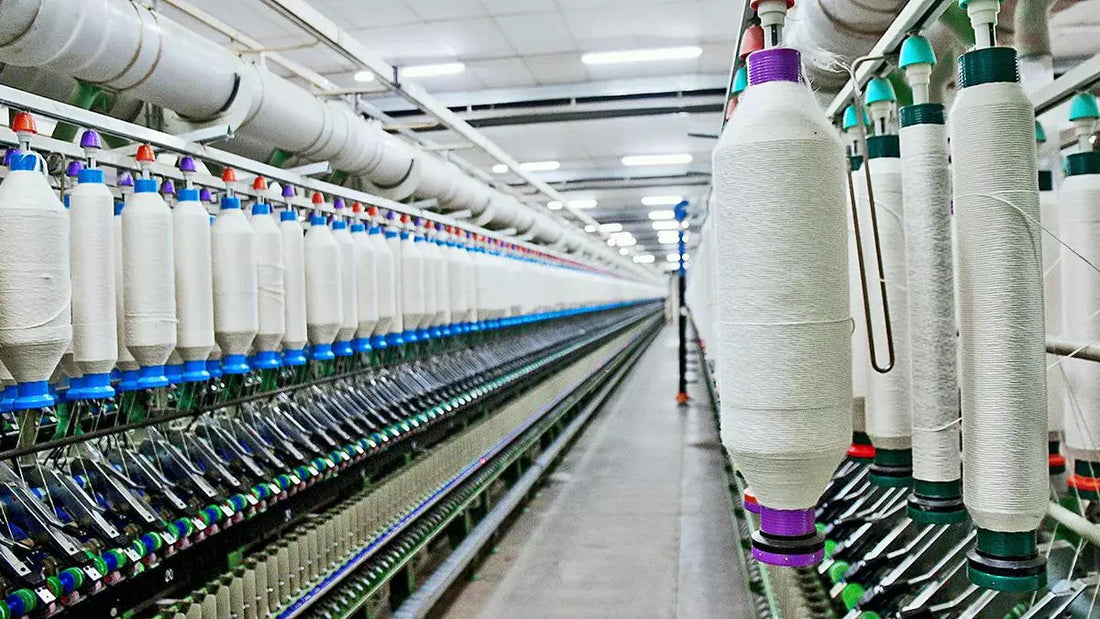The History of the American Textile Industry: From Colonial Roots to Modern Challenges

The American textile industry has played a pivotal role in the nation's economic development, shaping industrialization, labor movements, and global trade. From its humble beginnings in colonial times to its rise as a global manufacturing powerhouse, the industry has undergone significant transformations. This article explores the evolution of the U.S. textile industry, examining its growth, challenges, and current state in the globalized economy.
Colonial Beginnings and Early Manufacturing
The origins of the American textile industry date back to the colonial era when households relied on homemade fabrics. Most clothing and textiles were produced domestically using spinning wheels and handlooms. The British Empire, seeking to maintain economic control, restricted large-scale textile manufacturing in the colonies, forcing Americans to import finished goods from England.
However, the American Revolution (1775-1783) disrupted trade, prompting a greater emphasis on domestic production. The first mechanized textile mills emerged in the late 18th century, inspired by British innovations like the spinning jenny and the water frame. Samuel Slater, often called the "Father of the American Industrial Revolution," memorized British textile machinery designs and replicated them in Pawtucket, Rhode Island, in 1790. His mill marked the beginning of factory-based textile production in the U.S. 
The Rise of New England’s Textile Industry
In the early 19th century, New England became the heart of the American textile industry. The region’s abundant rivers provided water power for mills, while its ports facilitated trade. The Boston Manufacturing Company, established in 1813 by Francis Cabot Lowell and other investors, revolutionized production by integrating spinning and weaving under one roof in Waltham, Massachusetts. Lowell’s mills later expanded to other towns, creating the "Lowell System," which employed young women (known as "Mill Girls") and provided them with housing and education.
By the mid-1800s, textile manufacturing had become a major industry, with mills producing cotton, wool, and other fabrics. The American Civil War (1861-1865) disrupted cotton supplies due to the Union blockade of Southern ports, forcing Northern mills to seek alternative sources, such as wool and imported cotton.
The South’s Textile Boom and Labor Struggles
After the Civil War, the textile industry began shifting southward. Southern states offered cheaper labor, lower taxes, and proximity to cotton fields. Entrepreneurs like Edwin M. Holt in North Carolina built mills that attracted rural workers, including poor whites and, later, African Americans. By the early 20th century, the South had surpassed New England as the nation’s leading textile producer.
However, the industry was plagued by harsh working conditions, low wages, and child labor. Workers, often subjected to long hours in unsafe environments, began organizing labor unions. The 1920s and 1930s saw major strikes, including the Loray Mill Strike in Gastonia, North Carolina (1929), where workers demanded better pay and working conditions. Despite violent crackdowns, these movements laid the groundwork for future labor reforms.
Post-War Prosperity and Decline
Following World War II, the U.S. textile industry experienced a period of prosperity. Advances in synthetic fibers, such as nylon and polyester, expanded production capabilities. The industry benefited from strong domestic demand and government contracts during the Korean and Vietnam Wars.
However, by the 1970s, foreign competition began eroding America’s dominance. Countries like Japan, China, and India offered cheaper labor and production costs, leading to a wave of outsourcing. The North American Free Trade Agreement (NAFTA) in 1994 further accelerated the decline, as many manufacturers relocated operations to Mexico and other low-wage countries. Between 1990 and 2010, hundreds of mills closed, and hundreds of thousands of jobs were lost.
Modern Challenges and Revival Efforts
Today, the U.S. textile industry is a shadow of its former self, but it has not disappeared. Some companies have adapted by focusing on high-tech fabrics, military supplies, and sustainable manufacturing. Innovations in automation and "reshoring" (bringing production back to the U.S.) have helped certain sectors remain competitive.
The industry also faces challenges from fast fashion and global supply chain disruptions, as seen during the COVID-19 pandemic. However, there is growing interest in domestic production for national security and environmental reasons.
Conclusion
The American textile industry’s history reflects broader economic trends—industrialization, labor struggles, globalization, and technological change. While no longer the giant it once was, the sector continues to evolve, demonstrating resilience in an ever-changing global market. Understanding its past helps illuminate the challenges and opportunities facing U.S. manufacturing today.
